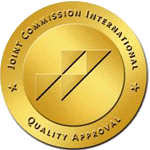Factors contributing to the development of cardiovascular diseases and their prevention

Cardiovascular diseases (CVDs) are the leading cause of morbidity and mortality worldwide. Every year in the world, according to the World Health Organization, 17.9 million people die from vascular complications, which accounts for 31% of all other causes of death.
Hypertension, coronary heart disease, atherosclerosis and their complications - myocardial infarction and strokes - occupy the main place among the causes of disability and invalidity, morbidity and mortality of the population. High blood pressure is a risk factor for coronary heart disease, heart failure and stroke. Hypertension can occur unnoticed, without obvious manifestations, and many patients do not know about its presence, so it is important to prevent increases in blood pressure and cholesterol levels.
To prevent CVD, their exacerbations and complications, it is necessary:
- to identify risk factors
- to carry out early diagnosis
- to receive outpatient treatment
- to diagnose acute cardiac conditions
- to provide inpatient treatment in a timely manner
An important factor in preventing the CVD development is the prevention of behavioral risk factors, such as smoking, poor diet, and low physical activity. Targeted impact on these factors can successfully reduce the risk of CVD. Maintaining a healthy lifestyle will help change factors such as overweight, obesity, increased cholesterol and blood sugar levels, and increased blood pressure.
First of all, you should pay attention to prevention:
- patients who are at high risk of developing CVD but are currently asymptomatic
- patients with existing atherosclerotic lesions of blood vessels
- relatives of patients with early development of cardiovascular pathology or high risk factors
It is important to understand that lifestyle changes are necessary for people at high risk, without symptoms of cardiovascular disease, and for people already suffering from CVD. For these activities to be effective, you need to follow simple recommendations: stop smoking, eat healthy and rationally, and be physically active.
The most effective intervention that can be undertaken as part of primary prevention to reduce the risk of CVD is smoking cessation.
Smoking is one of the widespread and aggressive risk factors contributing to the increase in cardiovascular diseases. Of all deaths from CVDs, 12% are associated with tobacco use and is one of the leading causes of CVDs worldwide. The risk of CVD increases even in those who are passive smokers.
Nutrition, as shown by numerous studies, influences the reduction of morbidity and mortality from CVD. Including vegetables (especially leafy greens), fruits, whole grains, nuts and legumes, moderate consumption of lean meat, fish, poultry and low consumption of processed red meat (sausages, sausages, kebabs, smoked meats), fast food and sweets; help reduce the risk of mortality compared to those who adhere to a standard diet. A diet rich in sugar and refined carbohydrates, trans and saturated fats, salt, carbohydrates and fast food products (hamburgers, hot dogs, deli meats) leads to impaired fat metabolism, namely an increase in blood cholesterol levels and the development of atherosclerosis.
It should be understood that for patients at high risk of CVD, it is important to make healthy dietary choices that will reduce the progression of the disease.
Another factor reducing the risk of developing CVD is physical activity.
Increasing physical activity is one of the methods for preventing CVD, as systemic inflammation is reduced and, as a result, the risk of developing cardiovascular diseases is reduced. Recommended levels of physical activity range from moderate - not <150 minutes per week, 30 minutes 5 days a week to vigorous - not <75 minutes per week, 15 minutes 5 days a week). Heavy physical activity or running is not recommended, but walking for 30-40 minutes a day is a must. The goal is to strengthen and train the heart.
Recommendations for daily physical activity:
- use the stairs instead of the elevator
- to the nearest public transport stop, walk
- take a walk during your lunch break
- If possible, use a bicycle or walk instead of public transport or a car
- do house and garden work, cleaning (vacuuming, wiping windows, mowing, weeding)
Daily habits - lifestyle, have a significant impact on the risk of developing CVD. Proper nutrition, regular physical activity, weight control and smoking cessation have been shown to significantly reduce the risk of CVD.
Important! Compliance with recommendations for lifestyle changes has a significant impact on reducing the risk of developing the disease and is recommended as primary prevention of CVD.




